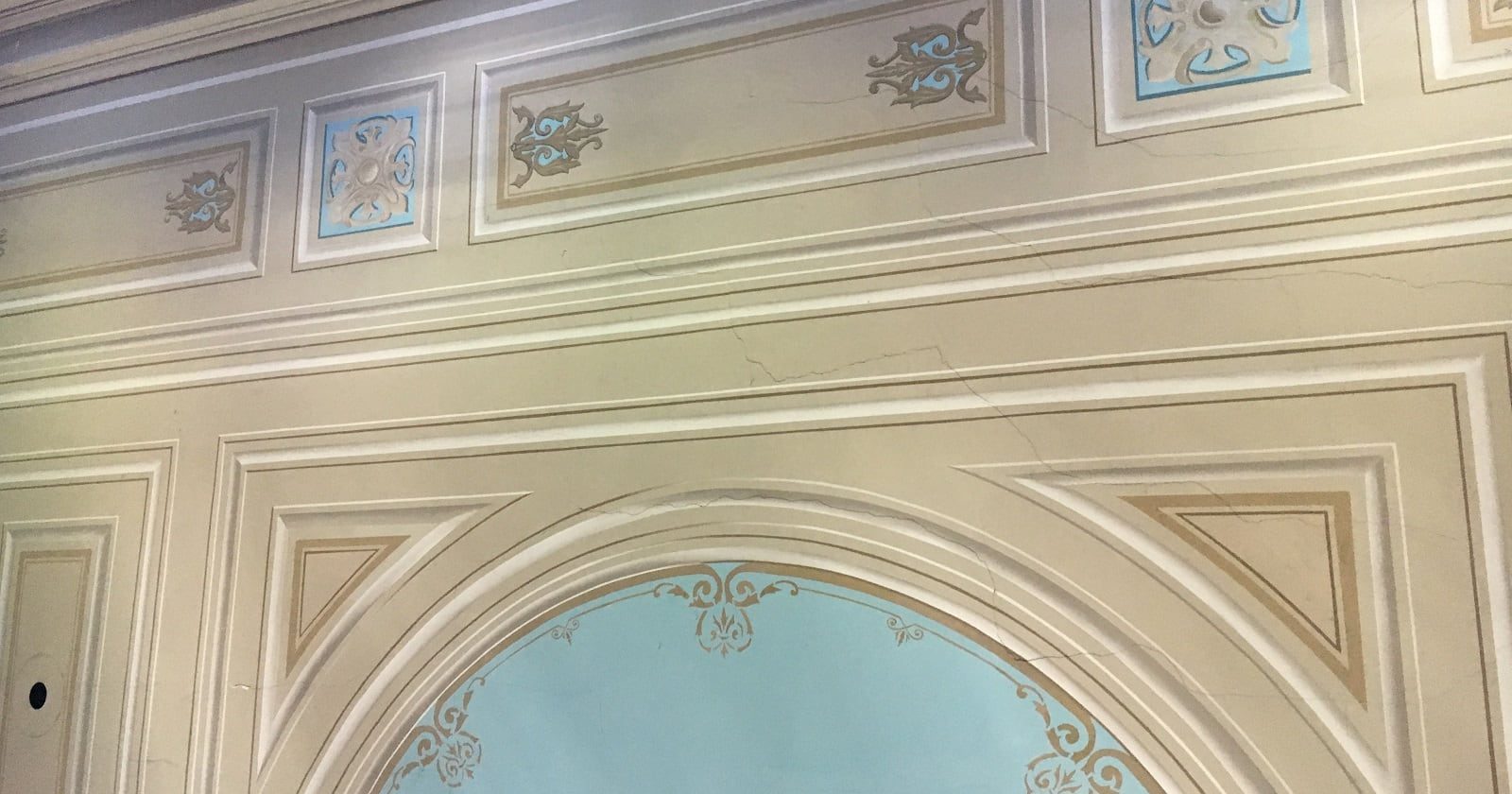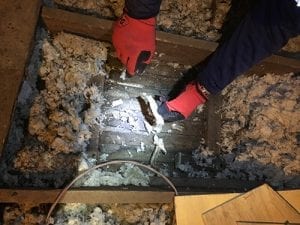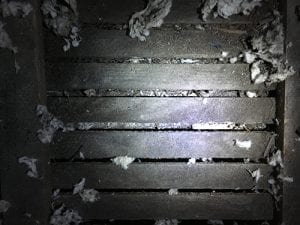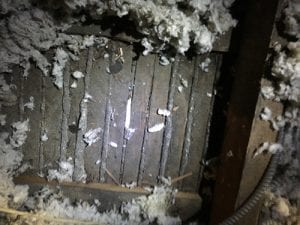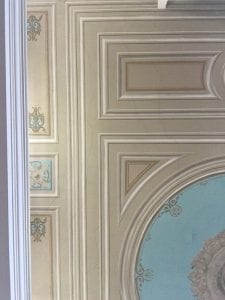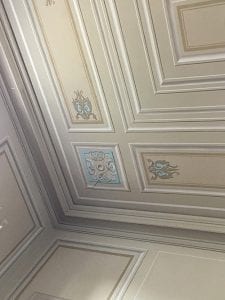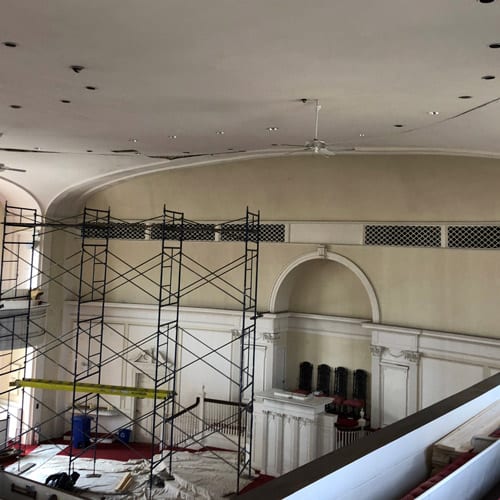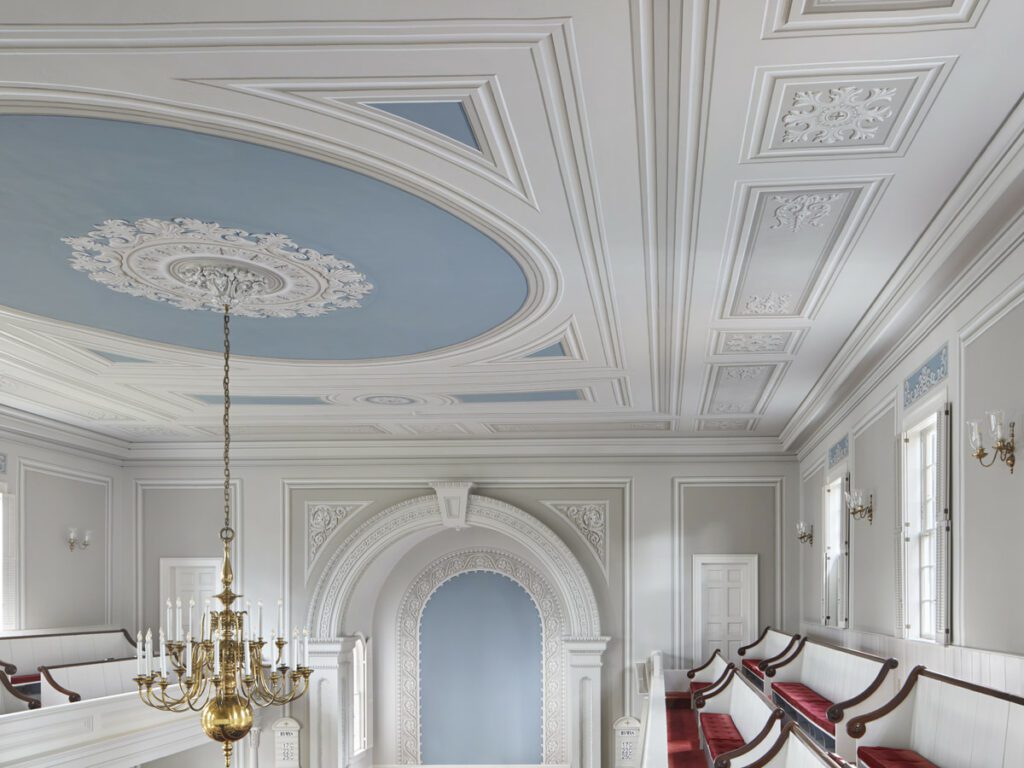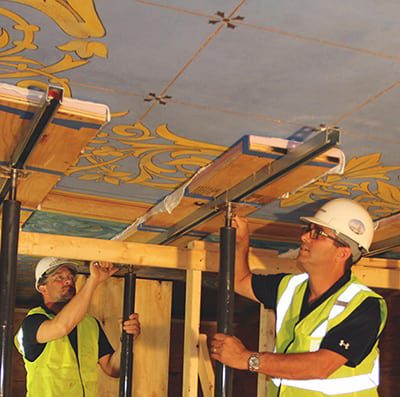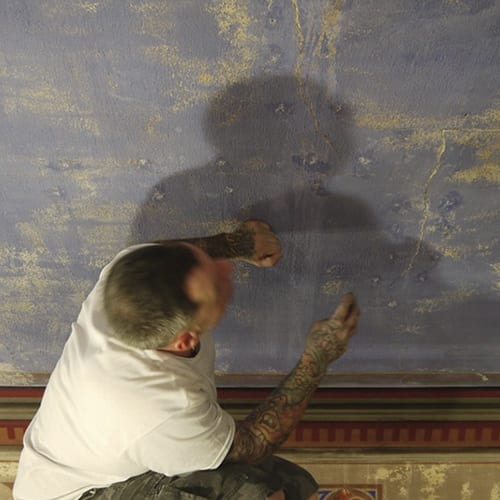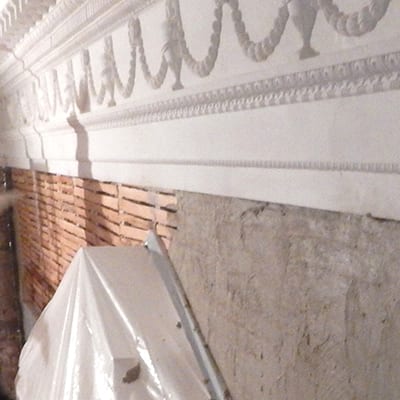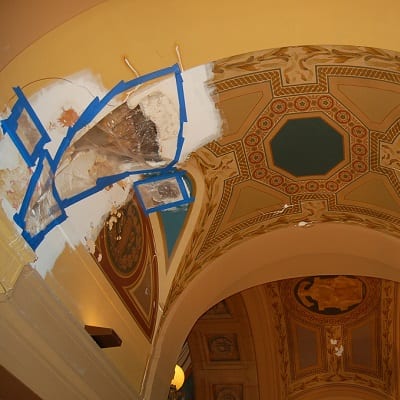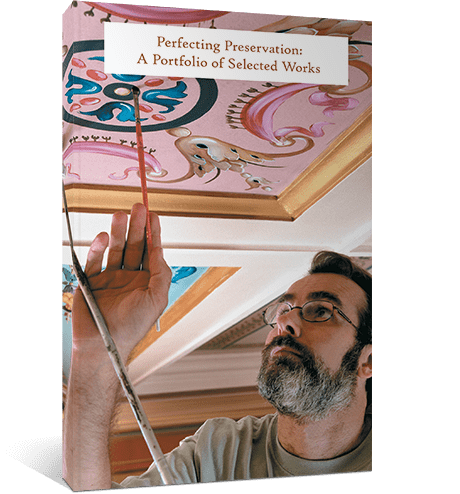The Problem – Plaster Deterioration
As time progresses, historic plasterwork will inevitably deteriorate. Often, the first element to fail is the connection between the wood lath the plaster is bonded to and the internal framing structure of the building. Lath separation is a common problem in historic buildings and there are a few ways to fix it—the most common being plaster consolidation. As the lath starts to fully separate from the structure, it increases the load on either side proportionally; resulting in further damage to the plaster, possibly causing more pieces of wood lath to separate from the frame. This condition is especially prevalent in historic ceilings, where the forces of gravity are actively working against the already weakened plaster finish. As more pieces of lath separate due to failing nails, the carried load dispersed on the remaining lath boards increases, and it is only a matter of time before catastrophic plaster damage occurs.
Within the confines of a singular space (room, ceiling elevation level, specific wall) we can refer to that specific flat plaster finish as a single unit. The forces acting on this singular unit are dispersed throughout the total area like they would be in any other mechanical system. As lath starts to separate completely, these detached pieces of wood lath and plaster are now “floating”, causing a 50% increase in the load on the neighboring attached lath. The increase in load is carried further down the line resulting in subtle damage, which overtime, will result in a large portion of the lath boards separating from the building frame. While dried plaster forms a hard durable surface, the resulting bowing in areas with a high percentage of lath failure will inevitably result in plaster failure. The detached plaster surface is now essentially suspended, held in place by inadequate supports.
Attic Views – Inspection taking place, revealing missing keys & lugs.
The Solution – Plaster Consolidation
Plaster consolidation seeks to not only fix existing damage, but also prevent further damage from occurring. Some restoration professionals prefer to restore failed lath by using original materials—often this involves using screws in multiple or strategic locations to reattach sagging plaster. While this is an effective technique, it can result in similar damage happening in the future and large expanses of the plaster will have to be replastered to cover the screws and other incidental damage. This is not always suitable for areas with extensive ornamental work. Moreover, it is not as effective as other methods, such as the use of an injected or sprayed resin or acrylic, which has become the industry gold standard in plaster consolidation.
Ceiling Views – showing various levels of cracking in the weaken plaster.
Specialized consolidation acrylic products, such as HPCS, are injected into the ceiling space between the plaster in the wood lath as a means of strengthening the entire plaster surface. As the HPCS resin mixture dries, it hardens and binds the plaster, lath, and wood framing together. The idea of “consolidation” arises because consolidation acrylic strengthens the weakened plaster, binds the plaster with the lath, and the lath to the substrate, transforming three individual elements in a mechanical system into one cohesive, singular element. This strong bond goes beyond merely reattaching the plaster to the lath, or the lath to the building. It is important to note that this acrylic agent will also strengthen the plaster itself. Years of bowing will cause the fibers of the plaster to stretch and weaken—this can help save time and money by eliminating the need to fully replace large amounts of plaster. Plaster consolidation is also an excellent choice for historic plaster interiors with extensive decorative moldings. Though, its use and success is project specific and may still result in some of the ornamental plasterwork needing to be replaced. Prior to any plaster consolidation work taking place, it is important for a full inspection of area to take place— including inside the wall or ceiling space. Spraying the acrylic consolidation compound onto wiring, HVAC elements, and piping might result in detrimental interactions, causing additional, unforeseen problem.
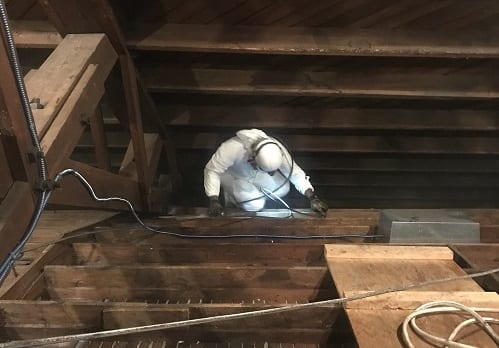
In the attic -HPCS treatment in progress.
The technique of plaster consolidation with HPCS resin or acrylic consolidation compounds has increased in use of the past few decades thanks, in part, to the relatively high success rate and return on investment compared to more expensive options, like complete plaster replacement. Additionally, this option helps to preserve the historic plasterwork— conserving any original ornamental plaster that might exist.

